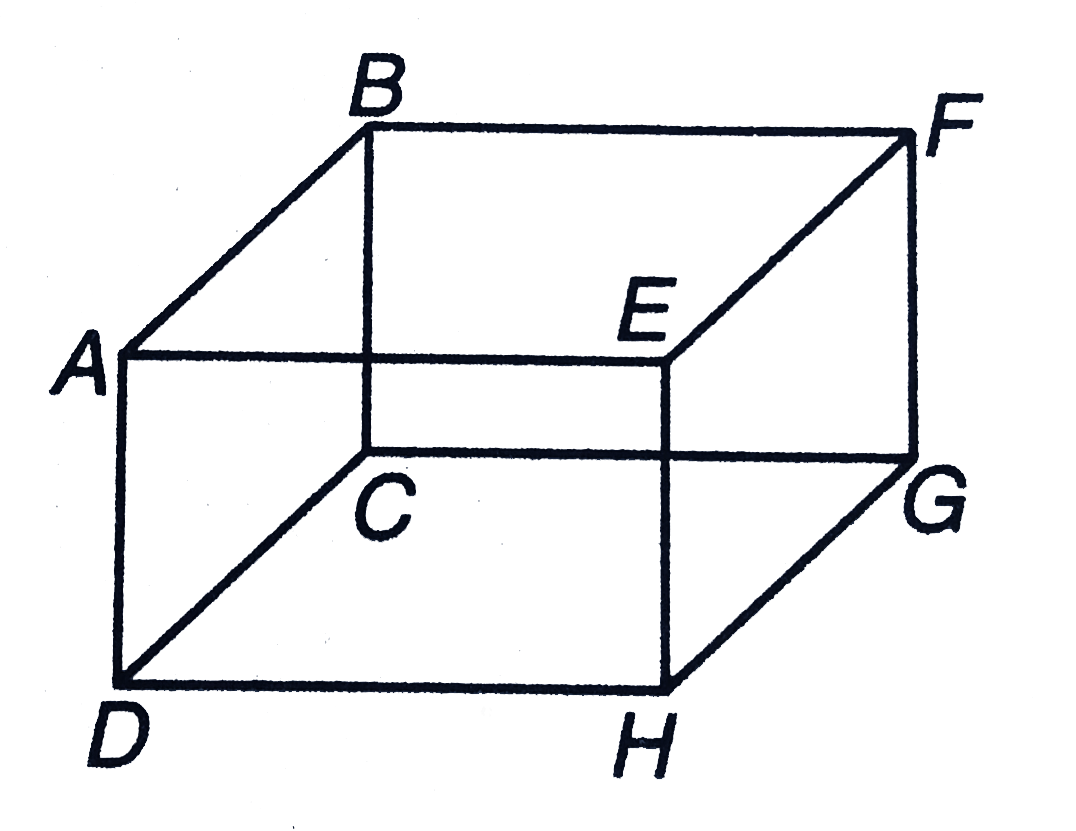A charge +Q is placed on middle of edge of the cube.Then electric flux through cube due to field of charge +Q is
A. Q8ɛ0
B. Qɛ0
C. Q6ɛ0
D. Q4ɛ0
To solve the problem of finding the electric flux through a cube due to a charge +Q placed at the middle of one of its edges, we can follow these steps:
Step 1: Understand Gauss's Law
Gauss's Law states that the total electric flux Φ through a closed surface is equal to the charge enclosed Q divided by the permittivity of free space ϵ0:
Φ=Qencϵ0
Step 2: Determine the Charge Enclosed
In this scenario, the charge +Q is not located inside the cube but at the midpoint of one of its edges. Since the charge is not enclosed by the cube, we need to consider how the electric field lines interact with the cube.
Step 3: Symmetry Consideration
Since the charge is located at the edge of the cube, we can use symmetry to determine how the electric flux is distributed. The charge +Q will produce electric field lines that will pass through the cube.
Step 4: Calculate Total Flux
According to Gauss's Law, if the charge were at the center of the cube, the total flux would be:
Φtotal=Qϵ0
However, since the charge is located at the edge, we need to find the fraction of the total flux that passes through the cube.
Step 5: Determine the Fraction of Flux
When the charge is located at the edge, it can be shown that the flux through the cube is 16 of the total flux that would be produced if the charge were at the center of the cube. Therefore, the flux through the cube can be calculated as:
Φcube=16⋅Qϵ0
Step 6: Final Expression
Thus, the electric flux through the cube due to the charge +Q placed at the middle of one of its edges is:
Φcube=Q6ϵ0
Conclusion
The electric flux through the cube due to the field of charge +Q is Q6ϵ0.
---
Gauss's Law states that the total electric flux Φ through a closed surface is equal to the charge enclosed Q divided by the permittivity of free space ϵ0:
Φ=Qencϵ0
In this scenario, the charge +Q is not located inside the cube but at the midpoint of one of its edges. Since the charge is not enclosed by the cube, we need to consider how the electric field lines interact with the cube.
Since the charge is located at the edge of the cube, we can use symmetry to determine how the electric flux is distributed. The charge +Q will produce electric field lines that will pass through the cube.
According to Gauss's Law, if the charge were at the center of the cube, the total flux would be:
Φtotal=Qϵ0
However, since the charge is located at the edge, we need to find the fraction of the total flux that passes through the cube.
When the charge is located at the edge, it can be shown that the flux through the cube is 16 of the total flux that would be produced if the charge were at the center of the cube. Therefore, the flux through the cube can be calculated as:
Φcube=16⋅Qϵ0
Thus, the electric flux through the cube due to the charge +Q placed at the middle of one of its edges is:
Φcube=Q6ϵ0
The electric flux through the cube due to the field of charge +Q is Q6ϵ0.
Similar Questions
A charge q is located at the centre of a cube. The electric flux through any face is
View SolutionA charge q is located at the centre of a cube. The electric flux through any face is
View SolutionA charge Q is situated at the centre of a cube. The electric flux through one of the faces of the cube is
View SolutionIn figure +Q charge is located at one of the edge of the cube as shown in figure-1.376. Then electric flux through cube due to +Q charge is given as

View SolutionA charge q is placed at the centre of a cube. What is the electric flux passing through the cube?
View SolutionA charge +q is placed at the mid point of a cube of side L. The electric flux emerging from cube is
View SolutionA charge q is placed at point D of the cube. Find the electric flux passing through the EFGH and face AEHD.

View SolutionA charge Q is situated at the corner of a cube, the electric flux passing through all the six faces of the cube is :
View SolutionA charge Q is placed at the centre of a cube. Find the flux of the electric field through the six surfaced of the cube.
View SolutionA charge Q is placed at the corner of a cube of edge length L. The electric flux linked to one of the faces not touching the charge Q is
View Solution
